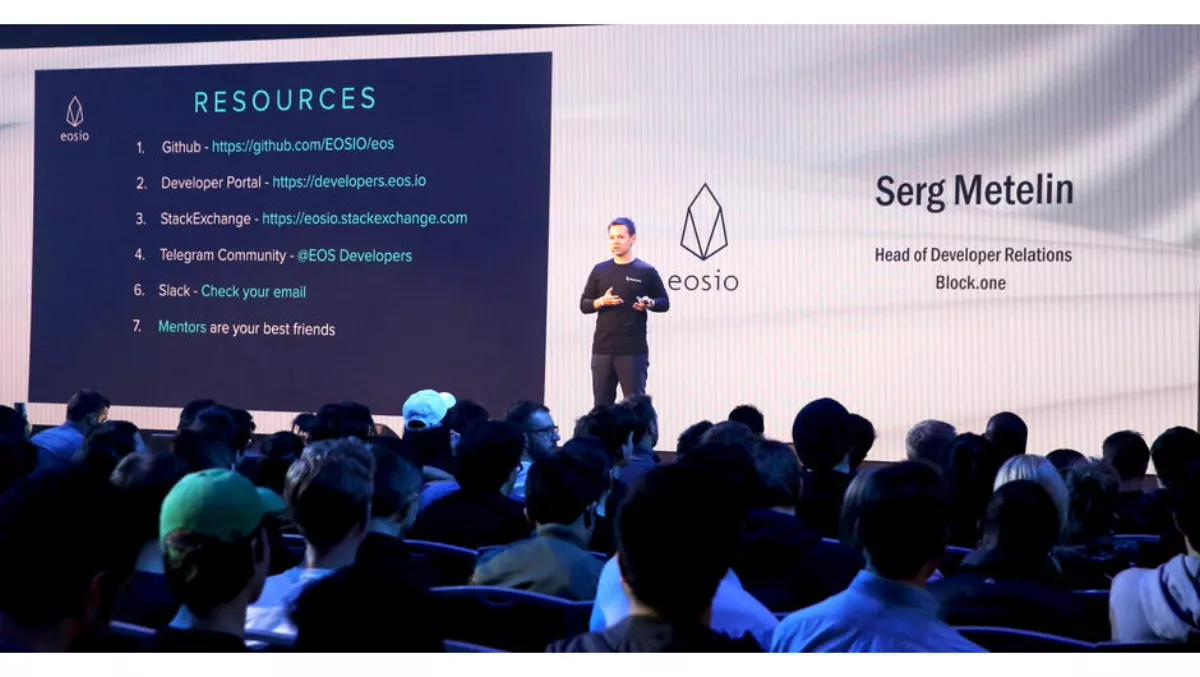
Exclusive: What will it take for blockchain to achieve mass adoption?
Enthusiasm for blockchain, or distributed ledger technology, in the business community is as widespread as the scepticism for it.
With the technology and its applications still an enigma to most, blockchain has a long way to go before it's mature enough for many of the use cases envisioned for it.
SecurityBrief spoke to Block.one developer relations head Serg Metelin about what it will take for blockchain technology to achieve mass adoption.p
Blockchain has emerged as one of the most transformative technologies of the past five years, and yet one of the most misunderstood. Why is this?To some degree, the world is still trying to get a full grasp and understanding of the Internet, let alone the blockchain.
Blockchain is the next step in the evolution of digital communications and business transactions.
Its full potential is still untapped, which creates a lot of excitement.
When this excitement is coupled with the highly technical and sometimes complex nature of the technology, misunderstandings can occur.
Blockchain is transformative because it was built for fundamentally secure and trusted data transfer from the beginning, as opposed to the World Wide Web, which did not prioritise security when it was created.
It is also capable of creating a brand new global digital infrastructure, while also increasing transparency and reducing risk for trade and communications.
At Block.one, we believe one key factor in getting people to better understand blockchain is by solving scalability and usability issues from previous generations of blockchain technology.
This will allow more people who are unfamiliar with blockchain technology to use decentralised applications without even knowing they are on blockchain.
This will help general adoption and, consequently, understanding of the tech in the long run.
What are some of the common myths surrounding blockchain technology?Some of the common misconceptions that people have are that blockchains are slow, difficult to use, and that mistakes cannot be fixed:
- Previous generations of blockchains are generally slow. For instance, Ethereum can process only around 15 transactions per second shared across the whole network.
- The 'hard to use,' myth comes from the fact that new blockchain adopters have generally had to learn new skills, such as cryptography and transaction fee management to work on blockchains.
- There's a notion that irreversibility of the blockchain implies that no developer mistakes can be fixed, and smart contracts that are deployed can never be updated, even in a scenario of a critical bug. This had been true for some time and caused a lot of controversy in the community.
But as blockchain technology matures and the developer community quickly expands, many of the inefficiencies found in the early days of blockchain are being fine-tuned for greater speed, user experience and accessibility.
For example, the EOSIO software can currently process more than 3,700 transactions per second on the public blockchain.
EOSIO also improves user experience by abstracting skills and allowing applications to work more like traditional web apps, while offering a process by which its smart contracts can be updated.
What needs to happen for more CIOs to begin adopting blockchain and viewing it as a viable technology?Thirty-five years ago, many questioned spending money on PCs for individual company workers.
It's now unheard of that an employee in a corporate environment would be without a computer.
As blockchain technology becomes more mature, it will become more apparent how it can deliver value and efficiencies to businesses.
CIOs will then naturally adopt it as with any technology.
One example of this is cloud computing, which was at one time not widely known, but now dominates business computing.
This process takes time, but we are already seeing positive momentum and disruption from the growing blockchain industry.
Where do you see blockchain making the greatest impact and where has it already seen success?Blockchain and its smart contracts directly address core issues faced by existing business and communications models on cost, transaction speed and transparency.
Industries such as supply chain and medical services can use blockchain's smart contracts to track records or products and to reduce risk and cost.
Blockchain can also be used to secure user data on digital platforms or social networks.
Smart contracts can streamline workflows and reduce costs in an organisation by cutting out middlemen – the software replaces the middleman.
This can be applied across any industry or business that requires digital communications or that includes transactions that need to be conducted and verified.
What needs to happen to build a robust blockchain ecosystem that extends beyond the first-mover developer community?There is a need to present blockchain's utility and real-world impact more clearly to the masses.
This can also be accomplished by creating tools that allow people to interact with the technology without having deep technical understanding of its mechanics.
We've already seen this with digital wallets, and the expanding decentralised application (DAPP) and DAPP development ecosystem.
The developer community, as a first mover, is a key participant group as it is developing the applications that will drive mass adoption.


